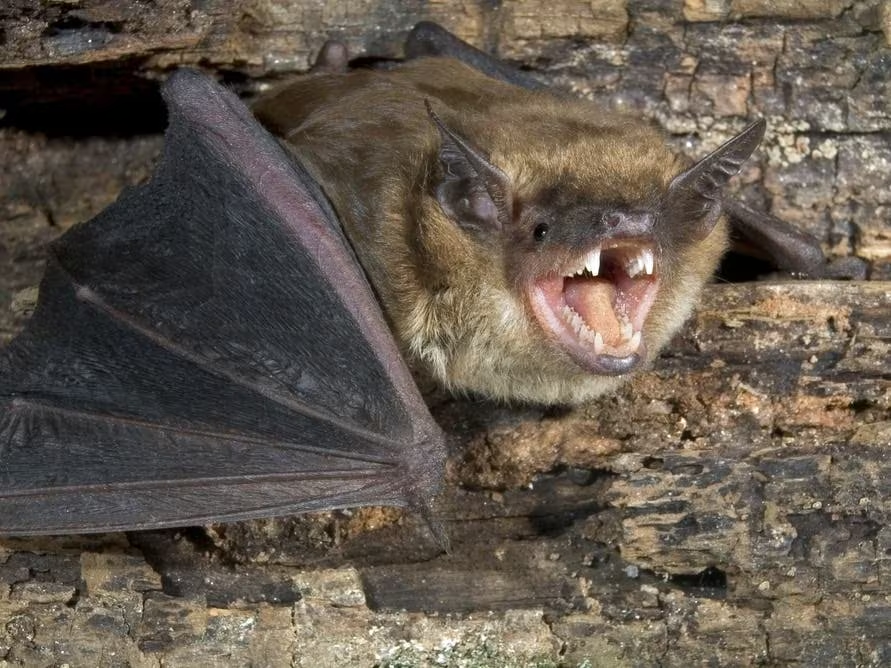Public Health Alert: Elevated Rabies Risk in Riverside County
Riverside County (RivCo) health officials have issued an urgent public health warning following a significant increase in the number of bats testing positive for rabies this year. Residents are strongly advised to take immediate precautions and avoid all contact with bats, dead or alive, to prevent potential exposure to the fatal virus.
The alert comes as the county confirms a substantial number of positive cases, highlighting an elevated risk of transmission within the local wildlife population. This situation demands heightened vigilance from all residents, particularly those with pets or young children.

Understanding the Threat: Rabies Cases in RivCo
As of the current reporting period in 2025, health authorities have confirmed that 18 bats found across Riverside County have tested positive for the rabies virus. This number represents a concerning concentration of the disease within the local bat population, which serves as the primary reservoir for rabies in California.
Rabies is a zoonotic disease, meaning it is transmitted from animals to humans. While rare in humans due to effective post-exposure treatments, rabies is nearly 100% fatal once symptoms develop. The virus attacks the central nervous system, and transmission typically occurs through the bite or scratch of an infected animal, or when saliva from an infected animal enters an open wound or mucous membrane.
Why Bats Pose a Unique Risk
Unlike larger, more aggressive rabid animals (like skunks or raccoons), bats can sometimes be found indoors or on the ground, making them more accessible to people and pets. A key danger is that a bat bite can be very small and may go unnoticed, especially if it occurs while a person or pet is sleeping.
The Riverside County Public Health Department emphasizes that any direct contact with a bat must be treated as a potential exposure. This includes finding a bat in a room with a sleeping person, an unattended child, or a pet.
Essential Safety Measures for Residents and Pet Owners
The most effective way to protect your family and pets from rabies exposure is through proactive prevention and strict adherence to official guidelines. Public health experts stress that these measures are non-negotiable given the current elevated risk.
1. Pet Vaccination is Critical
For pet owners, ensuring current vaccinations is the single most important protective measure. State law mandates that all dogs must be vaccinated against rabies, but veterinarians strongly recommend the same protection for cats, as they are also susceptible to the virus and often interact with outdoor wildlife.
- Mandatory Vaccination: Ensure all dogs are up-to-date on their rabies shots as required by law.
- Feline Protection: Vaccinate outdoor and indoor cats, as bats can sometimes enter homes.
- Immediate Reporting: If a pet comes into contact with a bat, or any wild animal, contact your veterinarian and the Riverside County Department of Animal Services immediately, even if the pet is vaccinated.

2. Avoid Contact with Wildlife
Never attempt to handle, feed, or approach any wild animal, especially bats. Bats that are easily accessible, flying during the day, or found on the ground are often sick and should be avoided.
Key Avoidance Rules:
- Do Not Touch: Never touch a bat with bare hands, even if it appears dead or docile.
- Secure Homes: Seal any openings in your home, attic, or garage larger than a quarter-inch to prevent bats from entering.
- Educate Children: Teach children never to touch or approach wild animals, and to report any animal encounter to an adult immediately.
Protocols for Bat Encounters: What to Do Immediately
If you or a family member has been exposed to a bat, or if you find a bat inside your home, swift and correct action is essential to ensure safety and allow for necessary testing.
If Contact Occurs (Bite or Scratch):
- Wash the Wound: Immediately and thoroughly wash the affected area with soap and water for at least 10 minutes.
- Capture the Bat (Safely): If possible, capture the bat without touching it. Use a container, box, or jar to trap the bat. Do not damage the bat’s head, as the brain tissue is required for rabies testing.
- Seek Medical Attention: Contact your healthcare provider or the emergency room immediately. Rabies Post-Exposure Prophylaxis (PEP) must be started quickly to be effective.
- Report to Health Officials: Contact the Riverside County Public Health Department immediately to report the incident and arrange for the bat to be tested.
If a Bat is Found Indoors:
If you wake up and find a bat in your bedroom, or if a bat is found near an unattended child or pet, assume exposure has occurred, even if no bite mark is visible. Bat bites can be extremely small and painless.
“If a bat is found in a room with a sleeping person, an unattended child, or a pet, it is critical to assume exposure has occurred and seek immediate medical consultation. Rabies is preventable, but only if treatment is administered before symptoms begin.”
— Riverside County Public Health Official (Statement paraphrased for context)
- Isolate the Bat: Close off the room to prevent the bat from escaping. If the bat is flying, wait for it to land.
- Call Animal Services: Contact the Riverside County Department of Animal Services or the Public Health Department for guidance on safe capture and removal for testing.
- Do Not Release: Do not release the bat outside. It must be tested to determine if PEP is necessary for anyone potentially exposed.

Key Takeaways for RivCo Residents
Given the confirmed surge in rabid bats in Riverside County this year, vigilance is paramount. Residents should internalize these critical points:
- High Risk: 18 confirmed rabid bats have been found in RivCo in 2025, indicating an elevated local risk.
- Prevention: Ensure all dogs and cats are currently vaccinated against rabies.
- Avoidance: Never touch or approach any bat or wild animal, especially those acting strangely or found on the ground.
- Immediate Action: If contact occurs, wash the wound immediately and seek urgent medical attention for potential Post-Exposure Prophylaxis (PEP).
- Testing is Essential: If a bat is found indoors, it must be safely captured and tested. Do not release it.
By following these simple, yet critical, safety protocols, residents can significantly reduce the risk of rabies transmission and protect their community from this serious public health threat.
Original author: Kat Schuster
Originally published: October 29, 2025
Editorial note: Our team reviewed and enhanced this coverage with AI-assisted tools and human editing to add helpful context while preserving verified facts and quotations from the original source.
We encourage you to consult the publisher above for the complete report and to reach out if you spot inaccuracies or compliance concerns.

